Physical Address
304 North Cardinal St.
Dorchester Center, MA 02124
Physical Address
304 North Cardinal St.
Dorchester Center, MA 02124
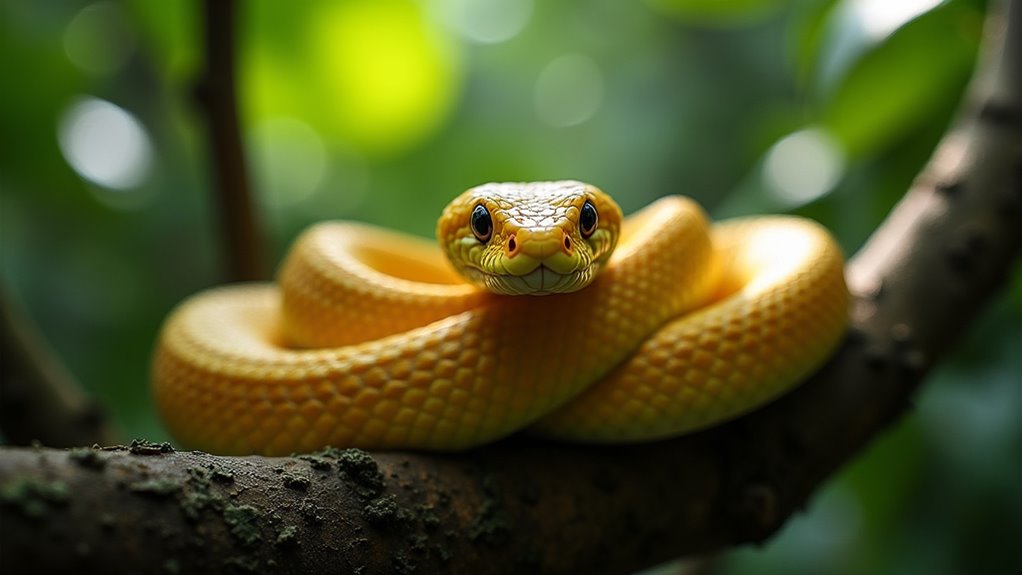
Wondering which deadly creatures lurk in Brazil's wilderness? From jaguars to venomous spiders, these 9 animals demand your attention.
Brazil’s wildlife includes several dangerous species you should watch for: the deadly Brazilian wandering spider, powerful jaguars, colorful poison dart frogs, venomous pit vipers, massive black caimans, shocking electric eels, excruciating bullet ants, disease-carrying kissing bugs, and feared piranhas. While most animal encounters are harmless, knowing how to identify these creatures and understanding their habitats and behaviors can help you stay safe during your Brazilian adventures. Discover what makes each of these species uniquely hazardous.
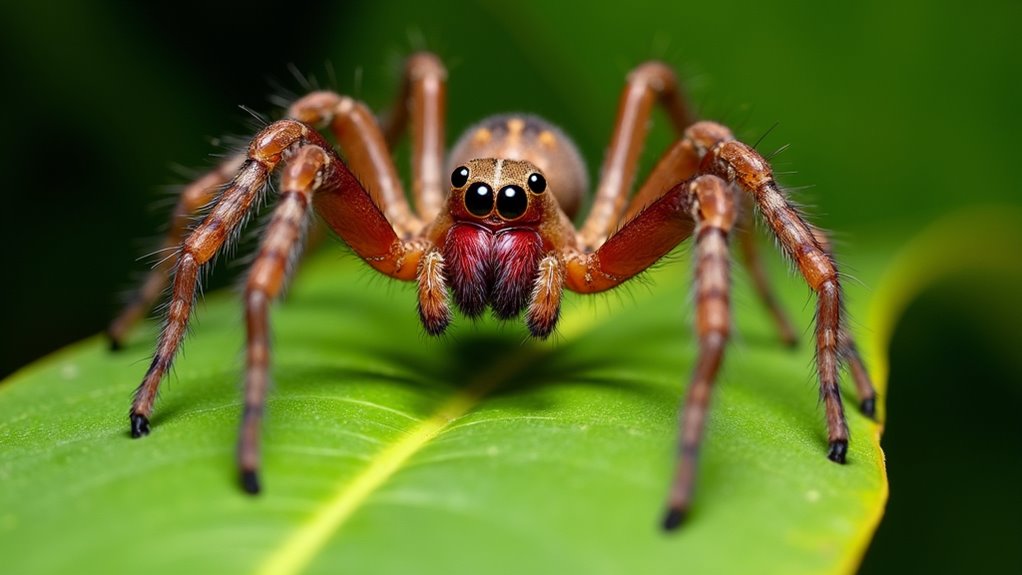
When people think of dangerous wildlife in Brazil, the Brazilian wandering spider deserves special attention as one of the world’s most venomous arachnids.
You’ll find these imposing spiders throughout Brazil and neighboring South American countries, often lurking in dense vegetation, under logs, or even in urban areas. They’re large predators, with bodies reaching 5 centimeters and leg spans extending to 15 centimeters.
Unlike web-building spiders, these nocturnal hunters roam the forest floor, ambushing everything from insects to small amphibians. They belong to the genus Phoneutria with nine identified species, including the notorious Phoneutria nigriventer.
Be cautious with banana shipments—these spiders occasionally hitch rides to North America and Europe, earning their nickname “banana spiders,” though they shouldn’t be confused with harmless species.
Among South America’s diverse wildlife, no predator commands more respect than the magnificent jaguar. You’ll find these powerful cats primarily in the Amazon Rainforest, which hosts over 80% of their population across Brazil, Colombia, Peru, and Ecuador.
Don’t underestimate their numbers—recent studies estimate around 173,000 jaguars across 19 countries, with the Brazilian Amazon alone potentially supporting 48,000.
While not endangered, they’re considered near threatened in regions like Peru.
If you’re exploring the Amazon, remember that jaguars face increasing threats from deforestation, agricultural expansion, and human conflict. Protected areas offer some sanctuary, with approximately 23% of their range falling within conservation zones. Each jaguar can be identified by their unique spot patterns, which researchers use like fingerprints to track individuals.
Camera traps have revolutionized monitoring efforts, helping researchers track these elusive apex predators throughout their vast territory.
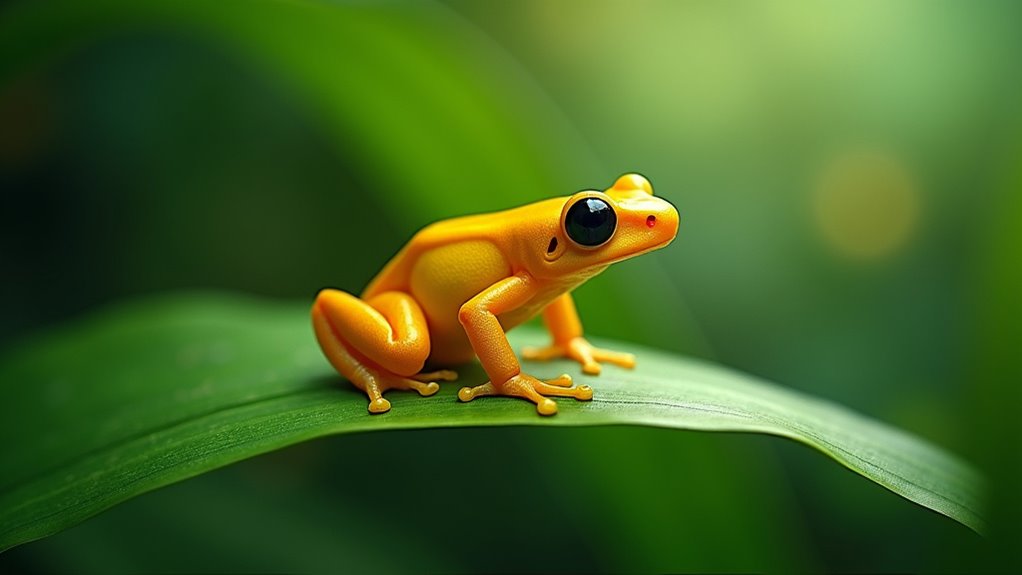
Despite their diminutive size, poison dart frogs represent some of Brazil’s most dangerous wildlife due to their potent toxins. These vibrantly colored amphibians, belonging to the Dendrobatidae family, produce batrachotoxins that rank among nature’s deadliest poisons.
You’ll find species like the Brazil-nut poison frog (Adelphobates castaneoticus) in the Amazon basin, particularly in Pará State. They inhabit humid rainforests, often using Brazil nut husks as microhabitats. The Brazil-nut poison frog displays a distinctive glossy black body with white or yellow spots on its dorsal surface.
Their bright colors serve as warning signals to predators.
Remarkably, these frogs obtain their toxicity from their diet of ants and arthropods—captive specimens typically lose this toxicity.
Conservation concerns are mounting as deforestation threatens their specialized habitats along the “Arc of Deforestation,” putting these remarkable amphibians at increasing risk of population decline.
You’ll encounter these venomous predators in dense tropical forests, scrubland, and even near cultivated fields with adequate cover. Juveniles tend to climb trees, while adults primarily hunt on the ground.
Their diet evolves as they mature—young vipers feed on frogs and arthropods before switching to rodents as adults. This adaptability helps them survive in various ecosystems up to 1000m above sea level. Young snakes employ a fascinating hunting technique called caudal luring, using their white tail tips to mimic insect larvae and attract prey.
Breeding occurs between April and May, with females delivering 10-14 offspring from February to April.
Despite their ecological importance in controlling rodent populations, these snakes face threats from deforestation and human conflict.
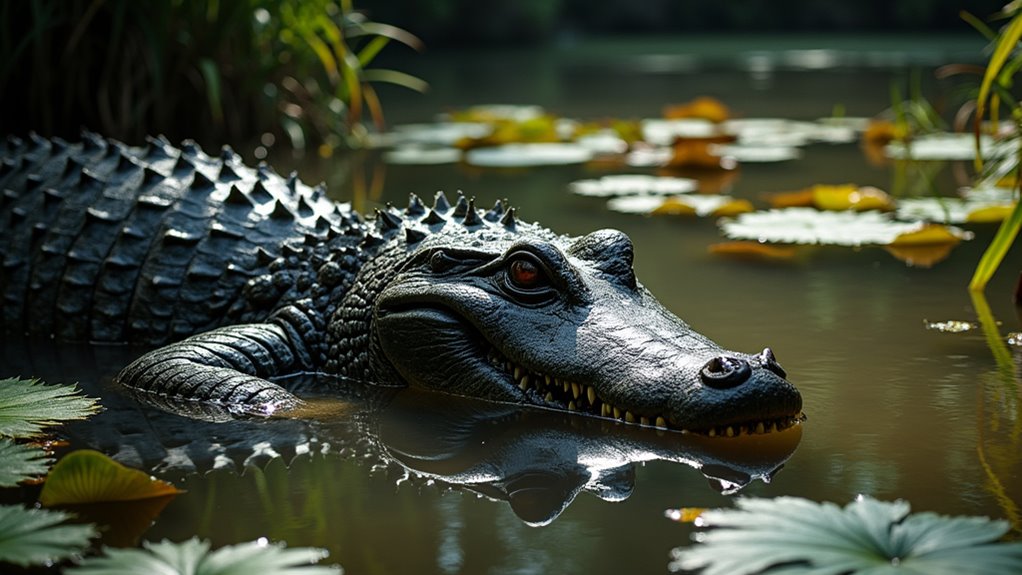
The ancient black caiman reigns as Brazil’s largest predator, lurking beneath the murky waters of the Amazon River Basin. These massive reptiles can reach lengths of 6 meters and weigh up to 400 kg, with powerful jaws that make them apex predators. With a current estimated population of about 1,000,000 individuals, they have shown remarkable recovery from historical hunting pressures.
Silent hunters of the Amazon, these colossal reptiles rule Brazil’s waters with prehistoric power
You’ll find them throughout the Legal Amazon Forest Area, particularly in slow-moving rivers and seasonally flooded regions.
While black caimans dominate Brazil’s surface waters with brute strength, another formidable predator lurks beneath, wielding a different kind of power.
Electric eels—actually three distinct species—inhabit slow-moving waters throughout northern Brazil’s Amazon and Orinoco basins. These remarkable creatures possess scaleless skin that varies from dark gray to brown with a yellow-orange underside. The most powerful, Electrophorus voltai, can deliver an 860-volt shock capable of causing cardiac arrest or respiratory failure in humans.
You’re most at risk when wading through their muddy, stagnant habitats, especially during the dry season when eels become concentrated in isolated pools.
Though human fatalities are rare, these 7-8 foot predators shouldn’t be underestimated. Their electric organs, comprising most of their body length, can deliver multiple stunning pulses in rapid succession.
If exploring Brazil’s freshwater ecosystems, remain vigilant—these shocking hunters are among the Amazon’s most remarkable dangers.
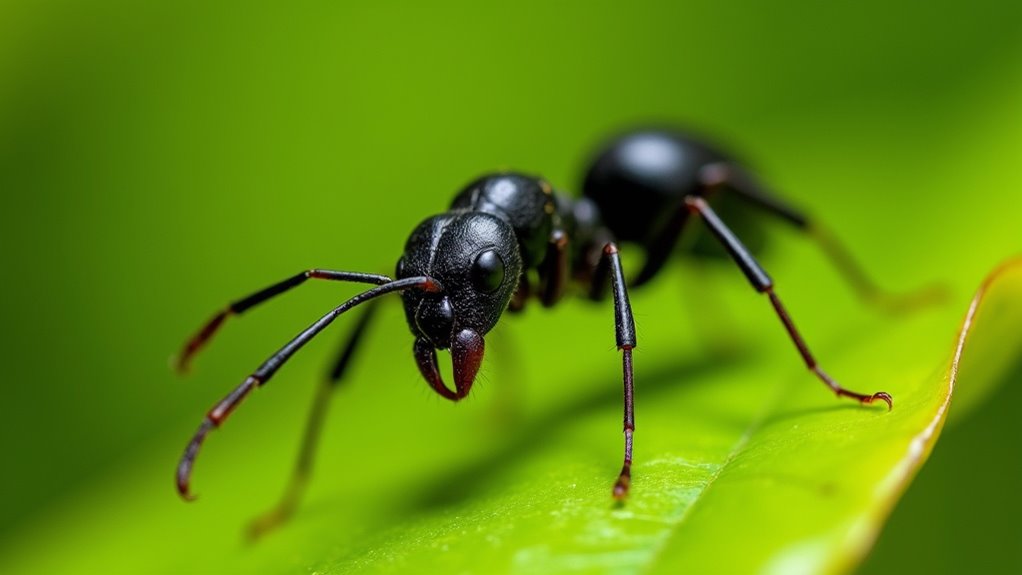
Lurking among Brazil’s lush rainforest floors, bullet ants deliver what scientists classify as the most excruciating insect sting on Earth. These large black ants (18-25mm) pack their venom with poneratoxin, causing pain comparable to “walking over flaming charcoal with a nail in your heel” that can last up to 24 hours. The excruciating sensation was meticulously documented by entomologist Justin O. Schmidt who developed his famous pain index specifically to categorize such extreme sting experiences.
Though not typically aggressive, they’ll defend themselves fiercely if disturbed. When hiking in Brazilian rainforests, watch for these formidable insects near tree bases and leaf litter.
While Brazil received WHO certification for eliminating vector-borne transmission in 2006, concerning trends have emerged, particularly in the São Paulo Metropolitan Region where over 30% of captured bugs carry the parasite.
Despite low national prevalence rates (0.03 per 100 inhabitants), you’ll find higher risk in states like Bahia, Goiás, and Minas Gerais.
You should be vigilant if living in or visiting endemic areas, as these insects often nest in dark spaces around human dwellings, including under beds and furniture. The kissing bugs transmit Trypanosoma cruzi through their infected feces, which can contaminate the bite site during their blood meals.

Despite their fearsome reputation in popular culture, piranhas don’t deserve their man-eating monster image. Native to South American freshwater systems, these fish rarely attack humans unprovoked. Most incidents involve single bites rather than the frenzied attacks depicted in films. Red-bellied piranhas are among the most notorious species, growing up to 20 inches long in their natural habitat.
Eirasalmus spilopleura (speckled piranha) is responsible for many documented incidents.
If you’re swimming in Brazil’s freshwater bodies, especially during warmer months, stay away from areas known for piranha activity and avoid water during their spawning periods.
Brazil’s wildlife demands your utmost respect. When traveling through its diverse ecosystems, remember that these nine dangerous creatures don’t seek human confrontation—they’re simply surviving in their natural habitat. Like shadows in the jungle, they move silently but powerfully through their domains. Always travel with guides, follow safety protocols, and maintain a healthy distance from wildlife. Your Brazilian adventure will be safer when you’re prepared and informed.